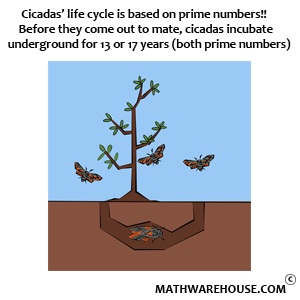Remember

Both parts of calculus are based on limits!
The limit of a function is the value that $$f(x)$$ gets closer to as $$x$$ approaches some number.
Examples
Example 1
Let's look at the graph of $$f(x) = \frac 4 3 x -4$$, and examine points where $$x$$ is "close" to $$x = 6$$. We'll start with points where $$x$$ is less than 6.
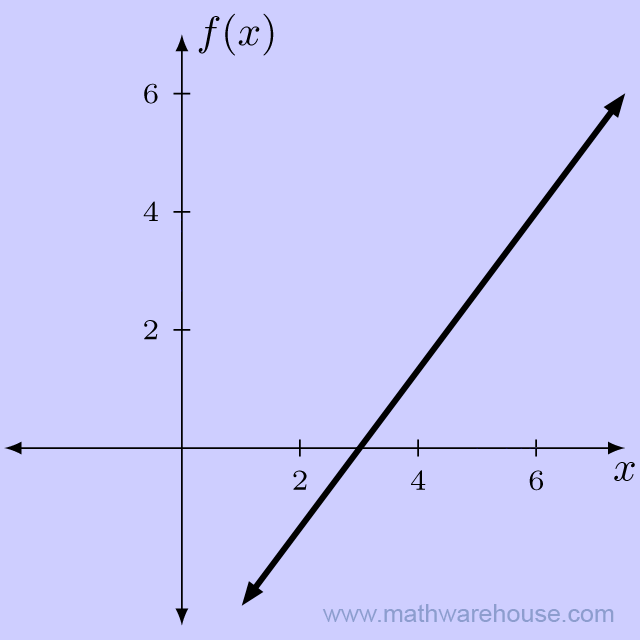
Notice that as the $$x$$-values get closer to 6, the function values appear to be getting closer to $$y = 4$$. Now, lets look at points on the function where $$x$$ is larger than 6.
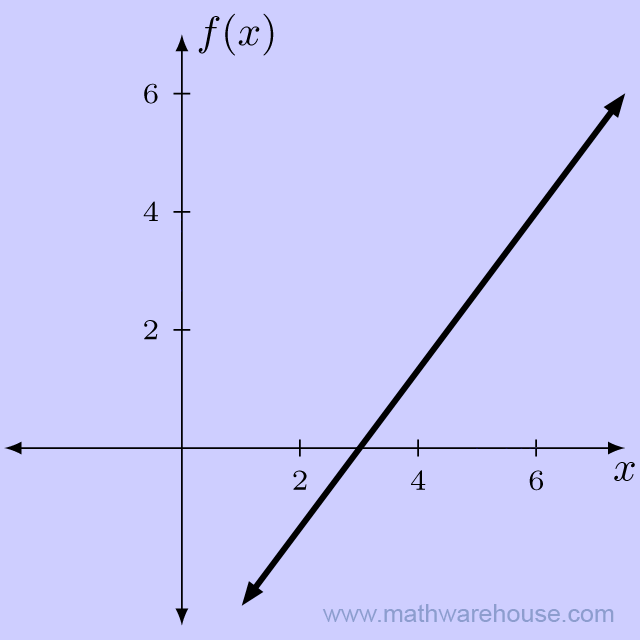
Table of Points Plotted
$$ \begin{array}{l|c} x & f(x)\\\hline \hline 7 & 5.33333\\\hline 6.5 & 4.66667\\\hline 6.25 & 4.33333\\\hline 6.1 & 4.13333\\\hline 6.01 & 4.01333\\\hline \end{array} $$
As before, the closer we got to $$x = 6$$, the closer the function got to $$y = 4$$.
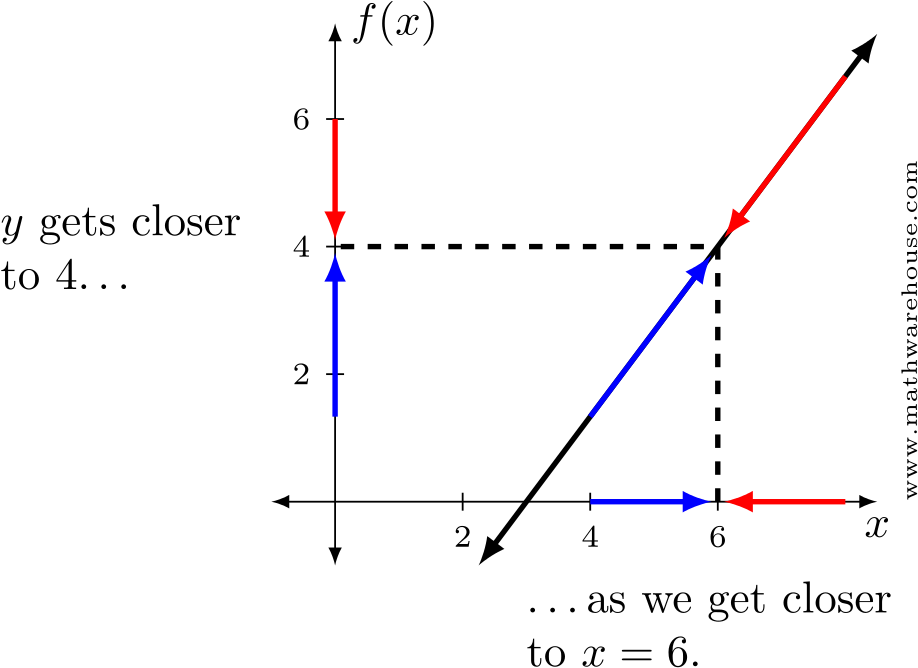
Of course, since $$f(6) = 4$$, this might not seem surprising. Nevertheless, this is the idea of a limit, and it can be summed up this way:
As $$x$$ gets closer to a particular number, what does the function get close to?
Limit Notation
Mathematicians have a special notation to indicate they are working with limit values. For example, the answer to Example 1 would be written like this:

Example 2
Suppose $$f(x) = \frac{\sin x}{x }$$. What is $$\displaystyle \lim_{x\to0} f(x)=$$?
It is tempting to just plug in $$x$$ = 0 to try to get an answer, but if we try
$$f(0) = \frac{\sin 0} {\color{red}{0}} \mbox{ is undefined! (Division by zero)}$$
Even though the function is undefined when $$x$$ = 0, we can still answer the
question using the limit.
The following two tables will help us understand what happens near $$x$$ = 0.
As $$x$$ gets closer to 0...
$$ \begin{array}{l|c} x & f(x)\\\hline \hline -1 & 0.84143\\\hline -0.5 & 0.9588\\\hline -0.1 & 0.99808\\\hline -0.01 & 0.99945\\\hline -0.001 & 0.9999998\\\hline \end{array} $$
$$f(x)$$ seems to be getting closer to 1.
OR
As $$x$$ gets closer to 0...
$$ \begin{array}{l|c} x & f(x)\\\hline \hline 1 & 0.84143\\\hline 0.5 & 0.9588\\\hline 0.1 & 0.99808\\\hline 0.01 & 0.99945\\\hline 0.001 & 0.9999998\\\hline \end{array} $$
$$f(x)$$ seems to be getting closer to 1.
In both tables, the closer x gets to 0, the closer the function seems to be getting to 1. Now, let’s peek at the graph of the function, just to verify it visually.
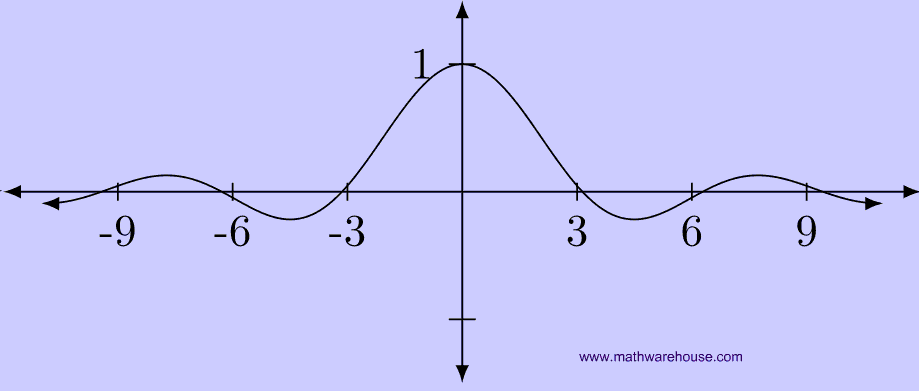
Just like the tables, the graph shows that as we get closer to $$x$$ = 0, the $$y$$-value appears to be getting closer to 1 !
Or, to use the math notation:
$$\displaystyle\lim_{x\to0}\frac{\sin x} x = 1$$.
Important
 $$\displaystyle \lim_{x\to0} \frac{\sin x} x = 1$$ does NOT say $$f(x) = 1$$ when $$x=0$$
$$\displaystyle \lim_{x\to0} \frac{\sin x} x = 1$$ does NOT say $$f(x) = 1$$ when $$x=0$$
 $$\displaystyle \lim_{x\to0} \frac{\sin x} x = 1$$ says $$f(x)$$ is getting $$\textit{close}$$ to 1 if $$x$$ gets close to 0 .
$$\displaystyle \lim_{x\to0} \frac{\sin x} x = 1$$ says $$f(x)$$ is getting $$\textit{close}$$ to 1 if $$x$$ gets close to 0 .
A Problem with Our Precision
Let’s take a look at those tables from the second example again
As $$x$$ gets closer to 0...
$$ \begin{array}{l|c} x & f(x)\\\hline \hline -1 & 0.84143\\\hline -0.5 & 0.9588\\\hline -0.1 & 0.99808\\\hline -0.01 & 0.99945\\\hline -0.001 & 0.9999998\\\hline \end{array} $$
$$f(x)$$ seems to be getting closer to 1.
OR
As $$x$$ gets closer to 0...
$$ \begin{array}{l|c} x & f(x)\\\hline \hline 1 & 0.84143\\\hline 0.5 & 0.9588\\\hline 0.1 & 0.99808\\\hline 0.01 & 0.99945\\\hline 0.001 & 0.9999998\\\hline \end{array} $$
$$f(x)$$ seems to be getting closer to 1.
In the second example we said that $$f(x)$$ seemed to be approaching 1. But aren't they also getting closer to 0.9999999? So which is true?
$$ \displaystyle\lim_{x\to0} \frac{\sin x} x = 1? $$
OR
$$ \displaystyle\lim_{x\to0}\frac{\sin x} x = 0.9999999? $$
That’s the problem with using tables of values (and we have the same problem with graphs). They are not precise enough to get an exact answer!
There are ways of determining limit values precisely, but those techniques are covered in later lessons. For now, it is important to remember that, when using tables or graphs, the best we can do is estimate.
Consequently, based on the tables and graphs, the answers to the two examples above should be
Example 1: $$\displaystyle \lim_{x\to6} \left(\frac 4 3 x - 4\right) \approx 4$$and
Example 2: $$\displaystyle \lim_{x\to0} \frac{\sin x} x \approx 1$$


